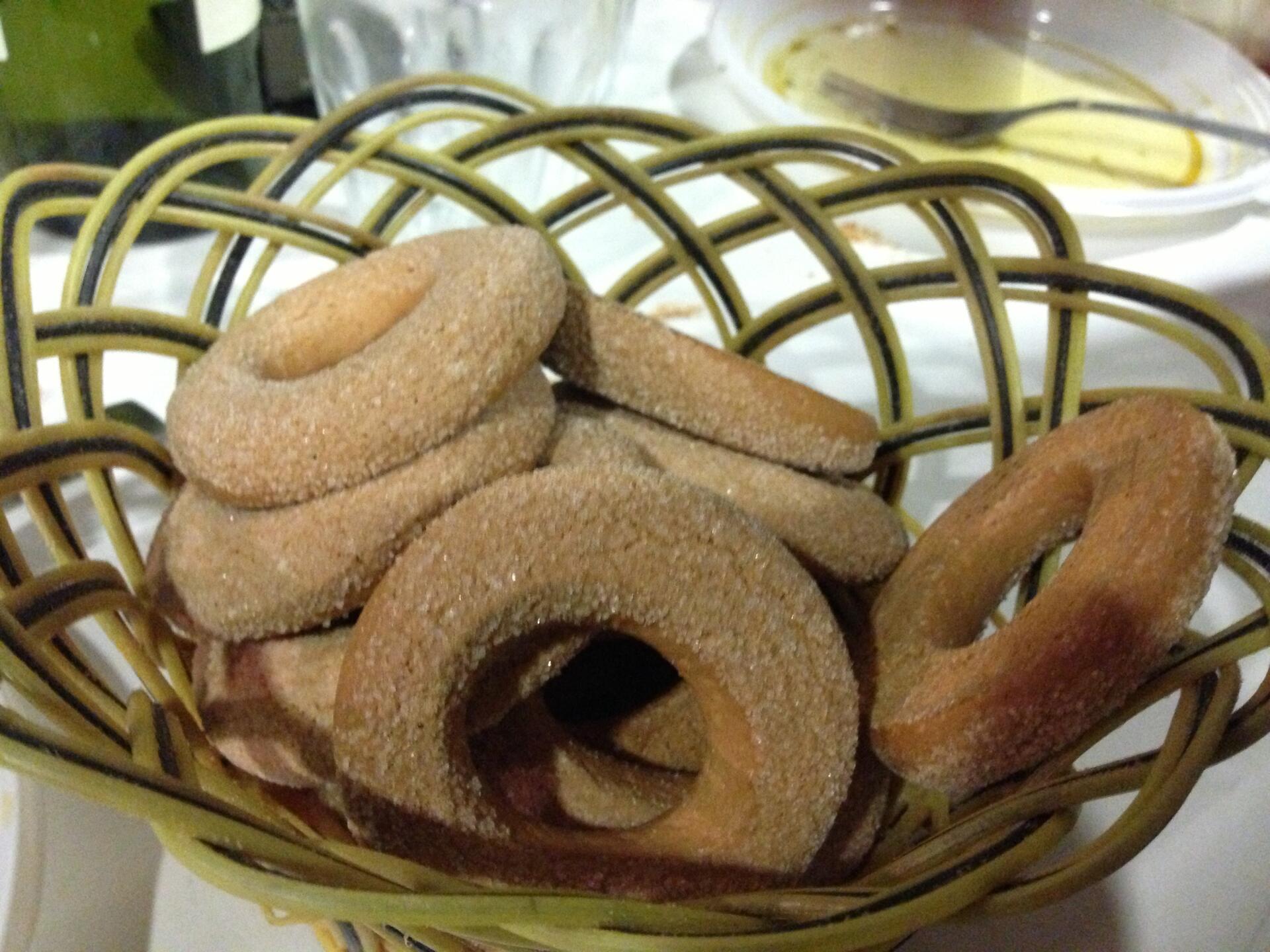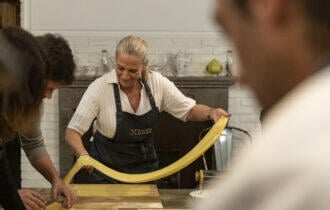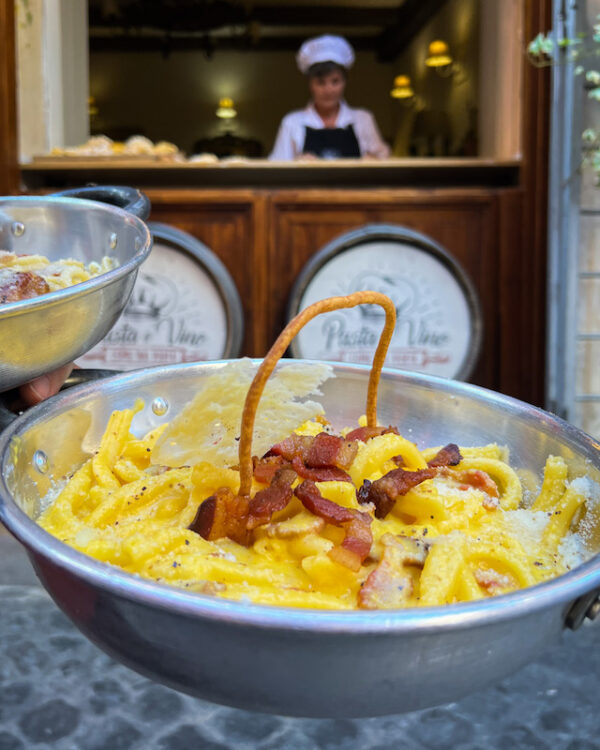Italy’s sweets are arguably as symbolic of the country as the Colosseum itself. Sicilian cannoli took its place in pop culture history with The Godfather‘s reference to this crisp ricotta filled concoction, while gelato and tiramisu’ have successfully traversed the Pacific to become frequent menu favorites. Yet the origins of such decadent, rich desserts are surprisingly austere: many traditional Italian pastries were conceived and perfected by cloistered nuns around the 17th century.
While the suore were never physically seen by the townspeople, they reminded the outside world of their presence through prayer and the sumptuous sweets they produced and sold. Struffoli (fried balls of dough bathed in a honey) and minni di virgini (white cakes dotted with cherries meant to mimic breasts in honor of the martyr Saint Agatha) were passed to hungry locals through a wheel-like window that prevented a glimpse of the nun turned pastry chef.
While we’ll never know what effect such sensuous pastries had on the nuns (was it a way to channel lustful thoughts? Did they ever sneak a bite?), we do know that these recipes eventually found their way out of the convents and into the hands of Italian bakers. Such treats have been enjoyed by Italians for centuries, and have also served as the inspiration for many other classic Italian desserts. Luckily, Rome offers a bevy of sweets that are particular of the region and that I enjoy, according to the tight waistline of my jeans, a little too often. Below, some of the best of the capital’s desserts along with a bit of history to make them even sweeter:
Maritozzi
A typical pastry of Lazio, the maritozzo is a sweet bun filled with pine nuts and raisins that is said to have originated in the Middle Ages during the Lenten season: it was the only sweet that believers allowed themselves to consume during fasting, a small delicious concession. Later, the pastry served a different purpose. Believed to have derived from the word marito, or husband, some say that these pastries were prepared by young women in Lazio who would bring them to the village piazza in hopes of attracting a spouse. Others maintain that it was actually the man who gifted his fiancée with a maritozzo in the shape of a heart. Whatever the story, maritozzi can luckily still be found today in the bakeries and bars of Rome and are commonly served filled with panna, or cream.

I bigne’ di San Giuseppe
The tradition of the fried fritter, also known as the zeppola or bigne’, can be traced back to the ancient Roman festival of Baccanali, where copious amounts of wheat flour dough was fried in honor of Silinus, the god of, you guessed, it, wheat. Eventually, the bigne’ was perfected by cloistered monks and was then adopted by Neapolitan pastry chef Pasquale Pintauro who popularized the recipe. The pastry is now symbolic of Italy’s beloved San Giuseppe, and is sold leading up to Saint Joseph’s Day. While regions of Italy vary on their bigne’ recipe (in Salento they use orange peel and chocolate cream – in Le Marche’ chestnuts and anise), Rome’s approach is undoubtedly my favorite: small fritters of egg, sugar, and butter are fried then filled with cream and dusted with a generous amount of powdered sugar.
Grattachecca
Closer to the American slushy or sorbet, the grattachecca dates back to Ancient Roman times, when ice was said to have been brought back from the Apennines and mixed with fruit syrups. Its modern name derives from grattare (to scratch) and checca, which refers to the massive blocks of ice that were used to keep food cold before the arrival of the modern day refrigerator. Ice was shaved from the block and served with your choice of flavored syrup, a recipe that has more or less remained the same today. Simple and refreshing, the grattachecca is the perfect treat for a hot Roman summer.
Ciambelline al Vino
These ring shaped cookies originated within the poorer farming communities where their principal ingredients (flour, nuts, and wins) were plentiful. Ciambelline could also be made and stored for long periods, another plus. Today, ciambelline are dipped in wine and are most commonly eaten around Christmas time.








